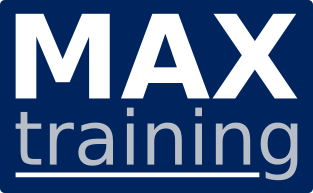IBM InfoSphere DataStage Engine Administration for Information Server v11.7
Code: KM530GOverview
This course teaches Information Server and/or DataStage administrators to configure, manage, and monitor the DataStage Engine which plays a crucial role in Information Server. It not only runs high-performance parallel ETL jobs designed and built-in DataStage, but also supports other Information Server products including Information Analyzer, QualityStage, and Data Click. After introducing DataStage parallel jobs and the Engine that runs them, the course describes DataStage project configuration, the Engine’s development and runtime environments, and the Engine’s data source connectivity. In addition, the course explains how to import and export DataStage objects, how to run and monitor DataStage jobs through the command line and GUI, and how to use some important Engine utilities.
Audience
This course is recommended for those who will be administering Information Server and DataStage.
Prerequisites
nullObjective
After completing this course, you should be able to:
- Describe the components of a DataStage parallel job
- Describe the engine architecture and project configuration
- Describe the purpose and format of the DataStage configuration file
- Explain how to configure the engine using environment variables
- Demonstrate how to configure data source connections
- List several ways of running DataStage jobs
- Describe how to monitor DataStage jobs and the runtime environment
- Manage data sets and run the Multiple Job Compile utility
- Import and export DataStage jobs and other engine objects
Course Outline
Unit 1: Introduction to the Information Server (DataStage) engine
- Describe the Information Server (DataStage) engine
- Describe how the engine is used in Information Server
- Identify how the engine is invoked
- List the main features of the engine
Unit 2: Elements of a DataStage job
- Describe the components that make up a DataStage job
- Describe the OSH and explain how it corresponds to the GUI DataStage job design
- Run a DataStage job and view the job log
Unit 3: Engine architecture
- Define partition parallelism
- Describe the DataStage runtime process
- Explain the purpose of job configuration files
- List the elements of a job configuration file
Unit 4: Engine project configuration
- Create Data users
- Give credentials to DataStage users
- Specify project roles for DataStage users
- Configure a DataStage project in the DataStage Administrator client
- Specify environment variable settings
Unit 5: Configuring database connectivity
- Configure the engine to connect to databases using direct API connections
- Configure the engine to connect to databases using ODBC drivers
Unit 6: Running DataStage jobs
- Run job sequences
- Run jobs from the command line
- Monitor the DataStage job log
- Use the DataStage and QualityStage Operations Console
- Manage the workload
- Stop and start the DataStage engine
Unit 7: Engine utilities
- Manage data sets
- Use the Multiple Job Compile utility
Unit 8: Importing and exporting DataStage objects
- Export and import DataStage objects in DataStage Designer
- Export and Import DataStage objects using the DSXImportService command
Price (ex. VAT)
Duration
Delivery methods
- Classroom
- On-site (at your location)
- Virtual (instructor online)
